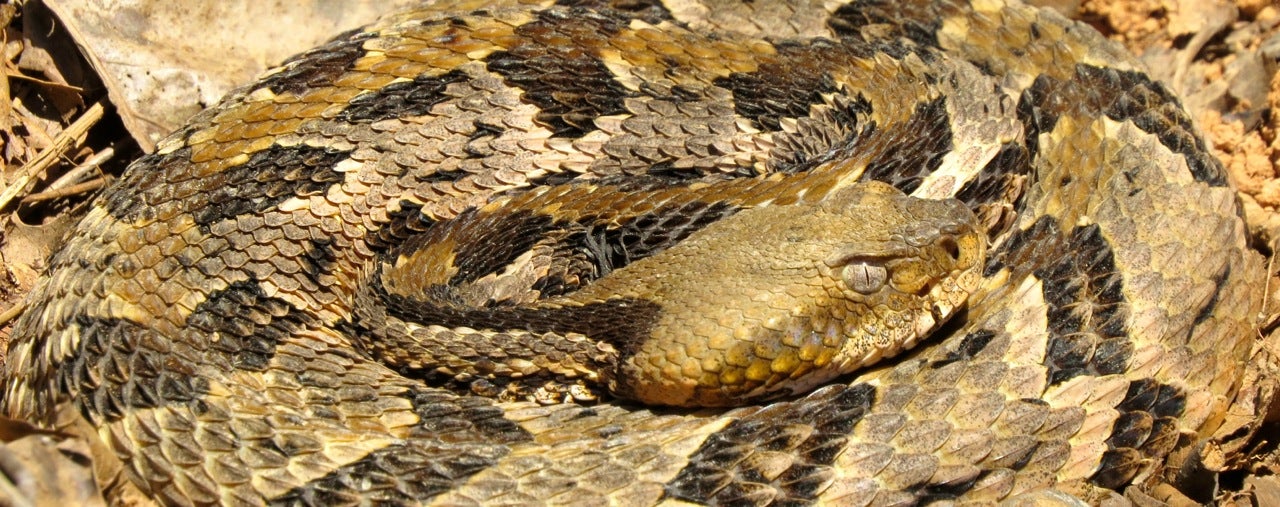Crystal Cockman Column: Speaking of rattlesnakes
Published 10:15 pm Sunday, September 23, 2018

- A timber rattlesnake on Richmond County easement property.
A friend of mine is a herpetologist at the North Carolina Zoo and has a property that is protected by a conservation easement.
Earlier this year, I visited his land and on a rocky outcrop on the northern side of his driveway were two adult rattlesnakes sunning themselves.

Crystal Cockman writes a column for The SNAP through the Three Rivers Land Trust.
In recent weeks, he has sent me updated pictures of these same rattlesnakes with recently born young beside them. This is the time of year for gravid rattlesnakes to start having their babies.
Although his property is in Randolph County, there are a lot of rattlesnakes in Stanly County as well, especially in and around Morrow Mountain State Park.
The timber rattlesnake (Crotalus horridus) is a venomous pit viper found in the eastern United States. You may have also heard these snakes called canebrake rattlesnakes, and that was previously believed to be a subspecies of the timber rattlesnake, but is no longer thought of as a distinct subspecies.
They have a pattern of dark brown or black crossbands or chevrons on a yellowish-brown to gray background. Some individuals, especially some found in the Appalachian mountains of North Carolina, are nearly completely black in color.
Timber rattlesnakes are found in the eastern United States from southern Minnesota and New Hampshire, south to East Texas and north Florida.
The historic range includes portions of Canada, but in May 2001 it was listed as extirpated in Canada. It has also been extirpated in Maine and Rhode Island, and is almost extirpated in New Hampshire.
New Hampshire has only one location with remaining timber rattlesnakes, and they are inbred such that they have a unique piebald coloration.
Timber rattlesnakes generally prefer dense forest habitat with rugged terrain. This time of year, gravid females can be found on open rocky ledges where they can regulate their temperature. These areas are known as “basking knolls.”
Females mate in late summer or fall and give birth the next year to 5-20 young. In the mountains, females may be 9-10 years old before they reproduce, and then may only reproduce every 3-4 years. As a result, the removal of adult rattlesnakes in these areas can greatly reduce population numbers.
In the winter, timber rattlesnakes go dormant in dens and rock crevices. In the mountains they will often hibernate together in large numbers.
Charlotte Ross, the “Legend Lady” who is storyteller and a professor at Appalachian State University, tells a folk tale about a young couple that built their house on a rocky mountainside.
They moved in to the house in the wintertime, and when they built a fire the denning rattlesnakes woke up and the husband and wife had to quickly flee the house.
The timber rattlesnake is listed as endangered in New Jersey, Vermont, Massachusetts, Virginia, New Hampshire, Indiana and Ohio. It is threatened in New York, Connecticut, Illinois, Minnesota, and Texas.
They are listed as a species of least concern on the IUCN (International Union for Conservation of Nature) Red List, because of its “very wide distribution, presumed large population, and because it is unlikely to be declining fast enough to qualify for listing in a more threatened category,” according to the IUCN website.
Timber rattlesnakes are still common in some parts of their range, but the current population trend is decreasing.
The major threats include habitat destruction, market hunting, snake hunting for sport, shading-over (the growth of large trees on and near a den site), logging (if done when rattlesnakes are active), and road mortality.
Timber rattlesnakes are ambush predators and feed mostly on small mammals, but will also eat birds and other snakes.
Most timber rattlesnakes are relatively docile creatures and are reluctant to bite or rattle.
However, the venom of the timber rattlesnake is very toxic and deaths from their bites have been recorded.
I’ve been fortunate to see a number of timber rattlesnakes in the wild, and in recent years I have also been lucky enough to get to see two hatches of rattlesnake young.
They are an incredible creature to observe (from a safe distance), and really quite beautiful.
With more public education about rattlesnakes and protecting more of their den sites and foraging areas, hopefully they will be around for future generations to also experience.
Crystal Cockman is land protection director for Three Rivers Land Trust, of which Stanly is part.



